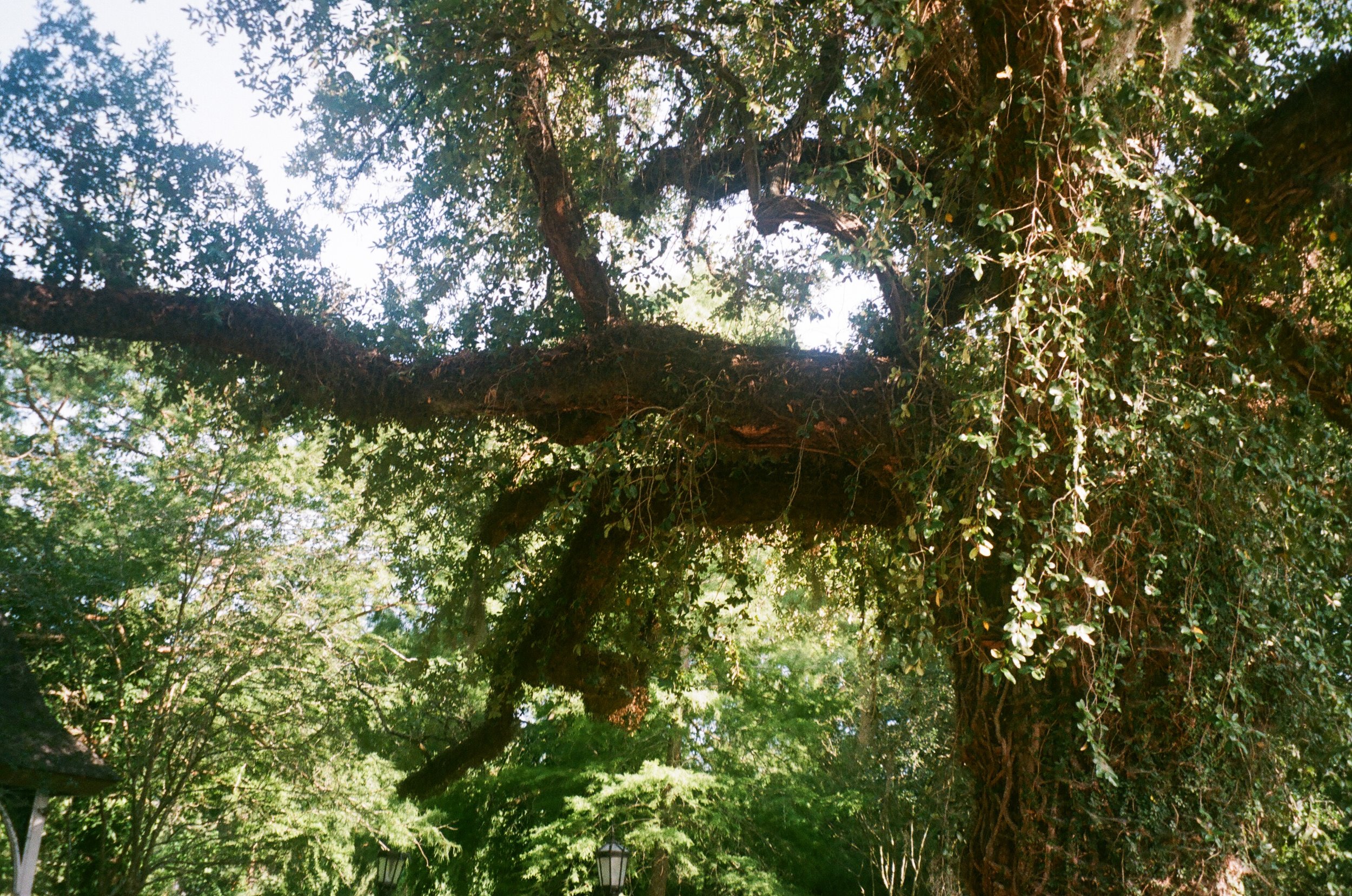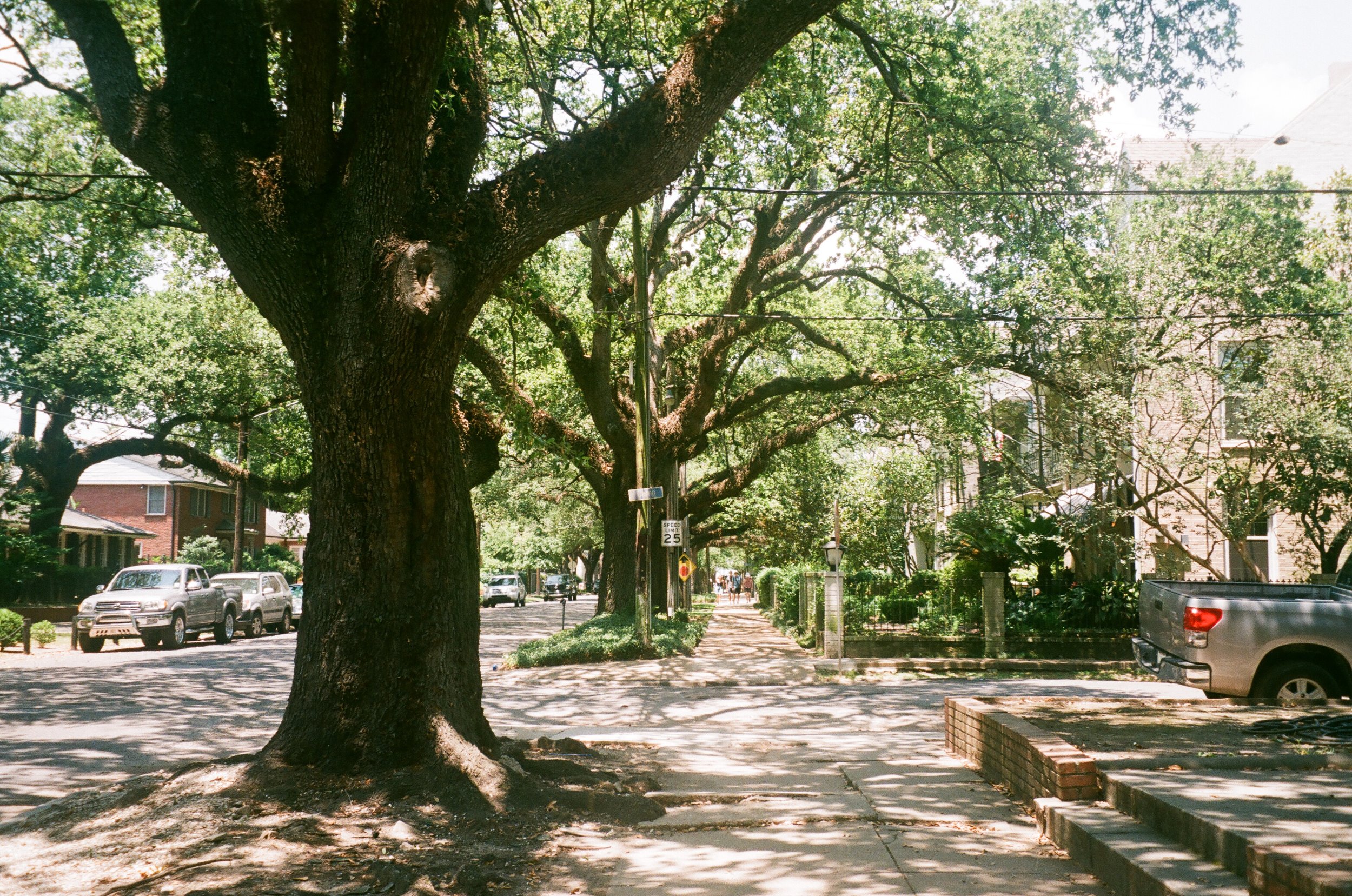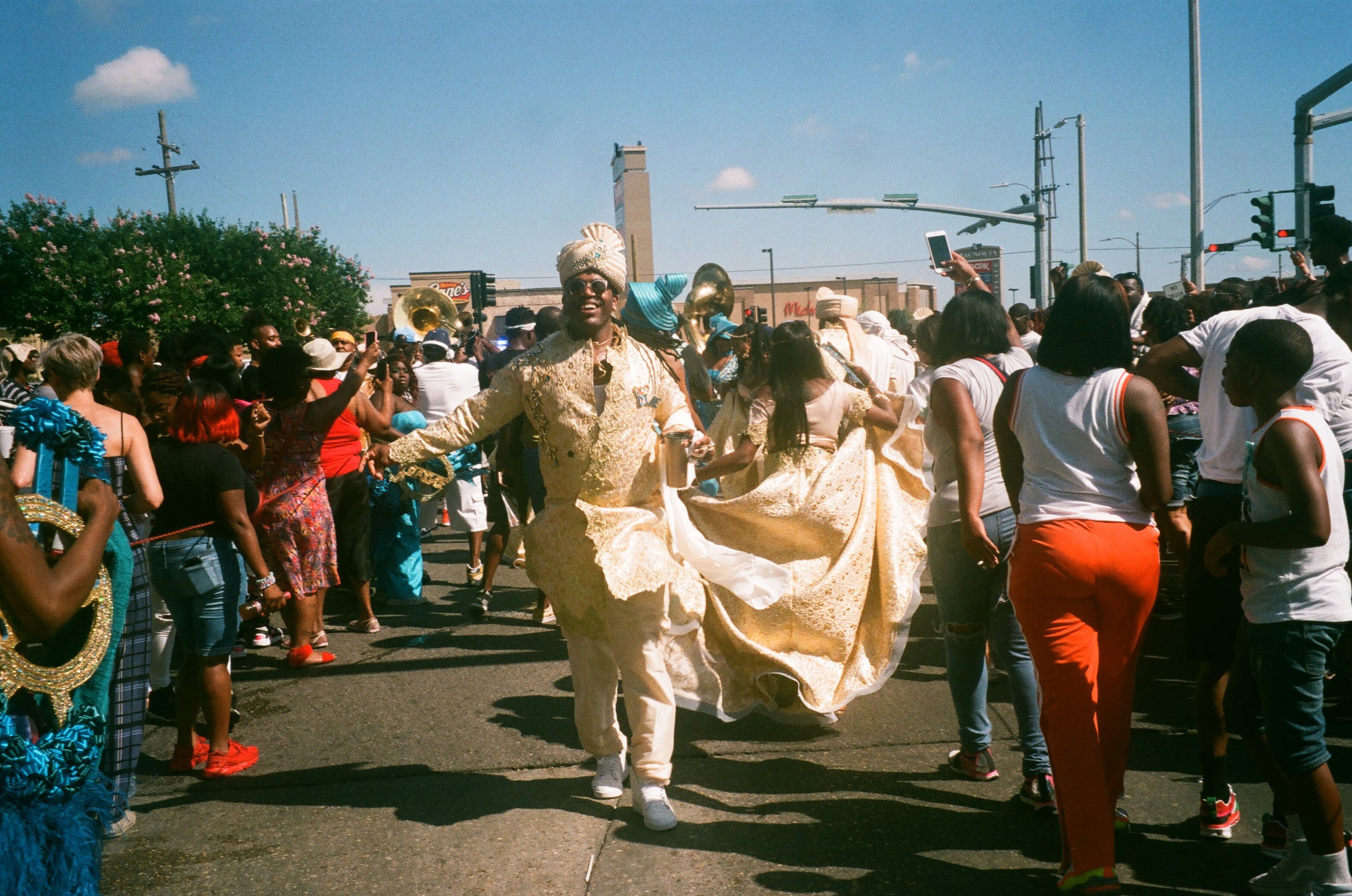This month of May was one of open blossoms, potent colors, blue shutters, and luscious green trees and grass. This month of May was spent in Louisiana, where the hot air does not let you forget sensation and leaves you sticky in sweat. In Louisiana, even the air feels romantic, as it rests on your skin when you gaze at a saxophone player, watch the fingers of a bass player, see the childhood one-room school of a famous author.
This romance I am rattling on about is not just the passion between two lovers, but about being a romantic and wondering about all the different kinds of love. If you have read my other pieces, you can probably tell I am enchanted by the world around me in all its symbols and metaphors - the lyrics, the human connections, the air, the nature, the stories, the aesthetics, the ideas. And being a romantic, I believe in love and always have. But, on this trip, I learned about the various kinds that tried to explain themselves to me this month of May.
Each novel we read, as most novels do, embraced some kind of struggle for love. For Edna, it was the romantic, erotic love she craved that spun wild in Storyville and the life of Buddy Bolden. Vampires are an embodiment of lust, but Ann Rice reconstructs complex ideas of love for these supernatural creatures torn between companionship and manipulation. Jefferson must learn to accept love. Grant, Miss Emma, Grant's aunt, and so many others in the plantation community - even Paul - try to express familial and friendship love even when its hardest. Floyd loves his daughter in the way that he does everything he can to be the best father for her, and the town comes together in their community love to keep them from losing each other.
Edna comes to the realization that she does not love her husband, Mr. Pontellier.
““As the devoted wife of a man who worshiped her, she felt she would take her place with a certain dignity in the world of reality, closing the portals forever behind her upon the realm of romance and dreams.””
She loved the attention and devotion he gave her, but that connection was thin. She married him out of convenience, in following the expectations of society. She chose “dignity” over passion and romance. A romance in which she finds with a man, Robert, whose relationship with her is far from allowed in their society. In The Awakening, Edna felt she was forced by her world to let go of romance like her childhood fairytales. As a novel about female independence, and an “awakening” in more ways than one, my mind explored how I felt pressures to “find love” in my society and how expectations have and have not changed since the late 19th century. What do we prioritize, the euphoria or the logistics? The timing or the passion? The simplicity or the wildness?
A piece at NOMA presenting a woman as a painting - love as being the energy of a gaze.
““You’ve never had any possessions to give up, Jefferson. But there is something greater than possessions - and that is love.””
A Lesson Before Dying is a lesson on love. Grant tries to understand how much of himself he needs to give in order to be a loving person, swinging on a pendulum of selflessness and selfishness. Jefferson struggles with accepting the love that surrounds him, not believing in the words and the efforts of his family and Grant. Grant explains to Jefferson that even though his life has not been fair, he has something that is priceless - a huge space in many people's hearts. He urges Jefferson to share that love, because it is the greatest gift.
~~~
As I read these stories, I was also having long talks about all these different kinds of love with friends during and in between. A friend going through her first heartbreak, another one contemplating her relationship with her mother, a friend confused about his feels for a girl, a friend forgetting how actions affect other people, a friend facing divorce in the family, a friend falling for a friend, a friend worried she always loves the wrong person.
What sunk its teeth into my neck and strummed my heartstrings - it was love. It was discovering, and absorbing, all the different kinds of love that melt into each other and sometimes lead to confusion, disbelief, bliss. I came face to face with pondering the allusion of love, bleeding love, guiding love, and the desire to be loved.
Evangeline Tree
New Orleans and Southern Louisiana - a place so saturated - was this tangible backdrop for discovering all these kingdoms of love. It is so naturally beautiful that it feels like it holds your hand to lead your down the road of an old Southern romantic story. Sit on the edge of the Mississippi River with people that mean a lot to you, feel rain pounding on your soaking clothes as you run to a psychic that will tell you to open your heart, visit the “Evangeline Tree” from an Acadian Romeo-and-Juliet-esque poem your dad read to you as a child, eat warm beignets as you discuss philosophies on long lasting love.
Perfect should be in the future, Andrew said. You will change, and they will change. You cannot be trying to get back to something in the past.
It hit me a few times while in New Orleans that this trip, in its way, is a romance. A romance with myself, the world around me with its fascinating people, and storytelling.
For me, love exists. It exists in the serendipities and smiles and wanting to hold your friend's hand. It exists in the way your mother agrees to fill out your paperwork even though you just complained about something irrelevant for an hour. It exists in the way the a golden light catches a pink flower or slides across the green eye of someone who means a lot to you. A little boy giggling with his brother, not wondering at all where the jingling open air trolley may be taking them for the afternoon.



























